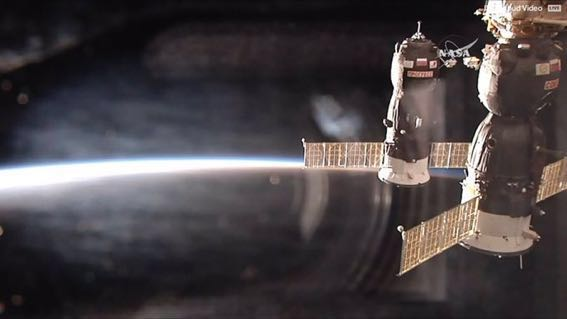On October 16, 2017, an unmanned Russian supply ship successfully docked at the International Space Station. Along with supplies for the astronauts aboard, the ship delivered the new antenna that will help reduce the cost of tracking raptors globally from more than $4000 a unit to less than $600.
The international team of scientists, statisticians, and movement ecologists that helped jumpstart this development met to discuss this ambitious venture in the Hawk Mountain Sanctuary Acopian Center in February of 2009. This advancement, organized by Max Planck with the Institute for Ornithology in Germany, will allow global conservationists and researchers to conduct raptor monitoring programs more efficiently and cost-effectively.
The antenna is part of ICARUS, International Cooperation for Animal Research Using Space. An ISS onboard computer will be connected and switched on after the antenna goes into operation in February 2018. Then, communication testing begins, and by late spring 2018, the ICARUS operational phase will commence.
In addition to the monitoring of the migration of small animals around the globe, this observation system will also be able to investigate the spread of diseases and maybe forecast natural disasters.
“A dream-come-true for raptor migration science owes its origins, in part, to Hawk Mountain Sanctuary,” said Director of Conservation Science and Interim President Dr. Keith Bildstein. “We have played a pivotal role in this great leap forward.”
The 2,500-acre Hawk Mountain Sanctuary is the world’s first refuge for birds of prey and is open to the public year-round by trail-fee or membership, which in turn supports the non-profit organization’s raptor conservation mission and local-to-global research, training, and education programs. To learn more about Hawk Mountain, please visit www.hawkmountain.org.



